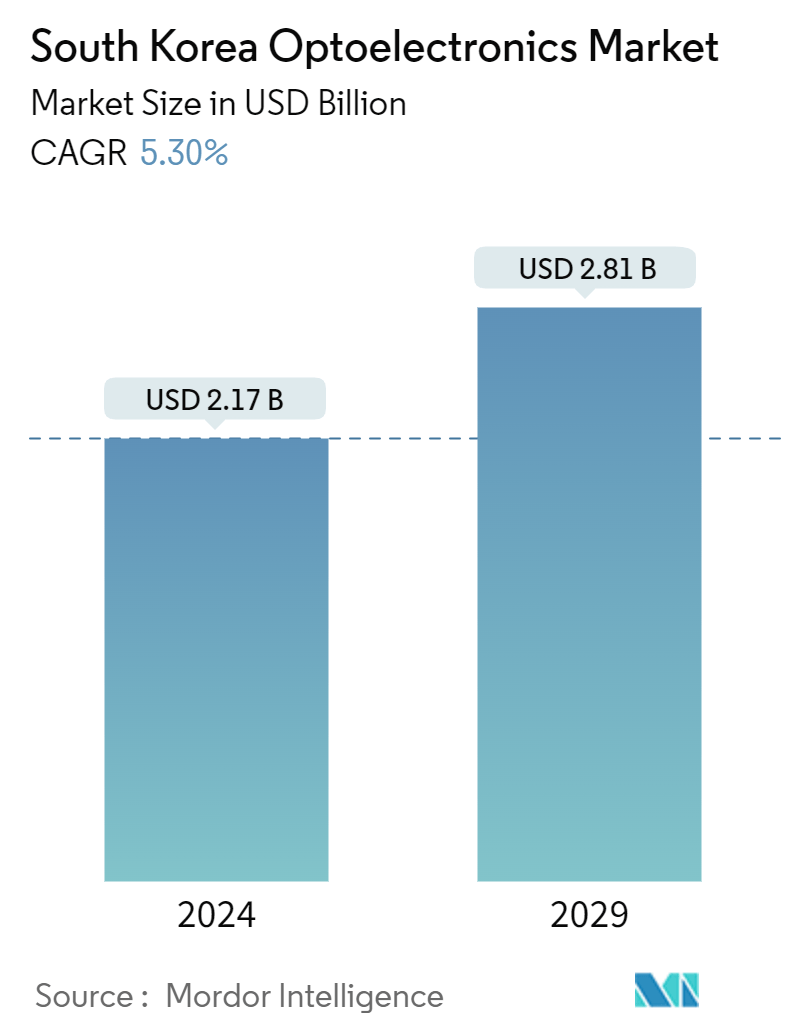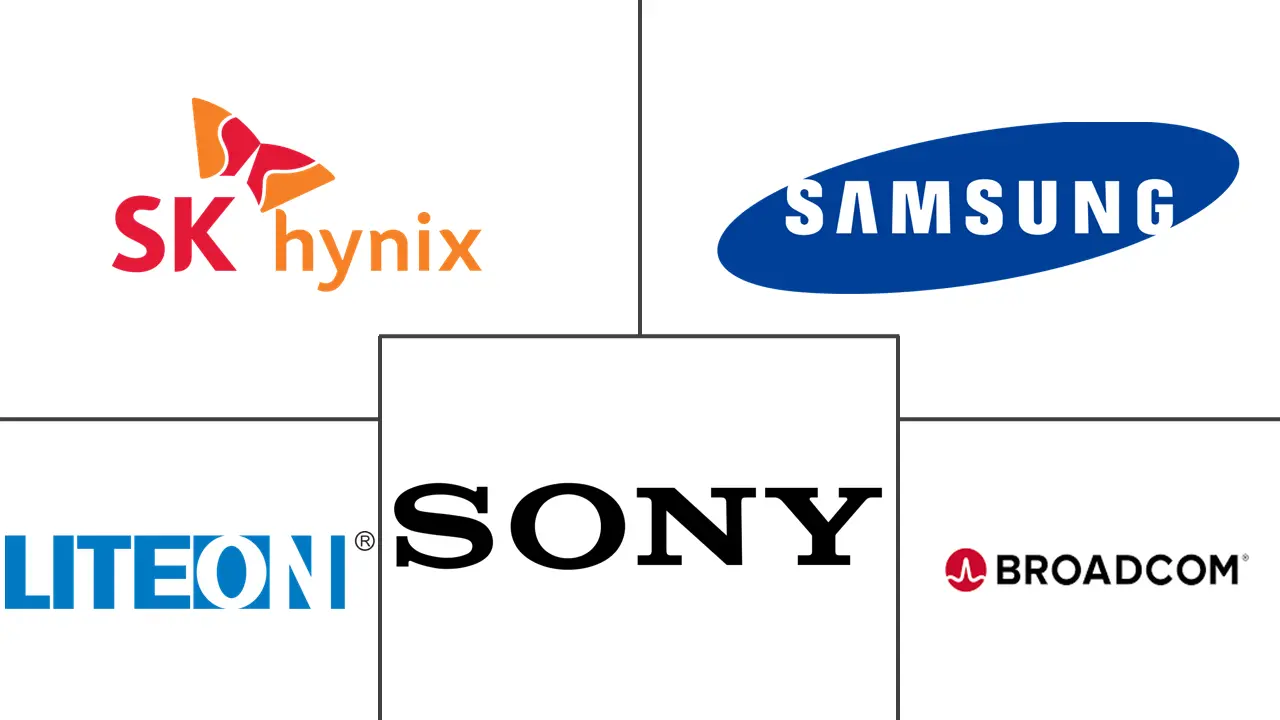Market Size of South Korea Optoelectronics Industry

| Study Period | 2019 - 2029 |
| Base Year For Estimation | 2023 |
| Market Size (2024) | USD 2.17 Billion |
| Market Size (2029) | USD 2.81 Billion |
| CAGR (2024 - 2029) | 5.30 % |
| Market Concentration | Low |
Major Players
*Disclaimer: Major Players sorted in no particular order |
South Korea Optoelectronics Market Analysis
The South Korea Optoelectronics Market size is estimated at USD 2.17 billion in 2024, and is expected to reach USD 2.81 billion by 2029, growing at a CAGR of 5.30% during the forecast period (2024-2029).
- Optoelectronics (or optronics) is a branch of electronics that focuses on studying and applying devices and systems that detect, control, and emit light. This field encompasses a variety of light forms, including visible light, infrared, ultraviolet, and even gamma rays and X-rays. Optoelectronic devices function as transducers, converting electrical signals into optical signals and vice versa. They are primarily based on the quantum mechanical effects of light interacting with electronic materials, particularly semiconductors.
- Optoelectronics provide electrical isolation, allowing two systems that operate at different voltages to interface. This helps in limiting data transmission issues caused by induced noise, crosstalk, and signal degradation due to worn runs. Optoelectronics provide a high bandwidth for communications, which is advantageous in various applications like telecommunications and data transmission. Optoelectronic devices consume less power, making them energy-efficient and suitable for applications where power consumption is a concern.
- The rising demand for consumer electronics is another crucial driver of the optoelectronics market. South Korea is one of the largest consumers of electronics, with a high penetration of smartphones, tablets, and smart home devices. The integration of optoelectronics components, such as sensors and displays, in these devices is driving market growth.
- Moreover, the increasing trend toward smart appliances and the Internet of Things (IoT) is further propelling the demand for optoelectronic components. As consumers seek more interconnected and intelligent devices, manufacturers are compelled to incorporate optoelectronic technologies to meet these expectations.
- LEDs are utilized in optical sensors for various automation applications, including object detection, position sensing, and motion control within factory environments. Also, LED lighting systems are extensively used in factory automation to provide efficient and durable illumination. They contribute to energy savings and improved visibility in industrial settings.
- Moreover, LEDs play a crucial role in machine vision systems used for quality control, inspection, and monitoring processes in factory automation. They provide consistent and reliable lighting for imaging applications. LED optoelectronics are utilized in control panels and indicators to display status, alerts, and operational information within automated systems. The increase in factory automation in South Korea is likely to drive the demand for the market studied .
- Furthermore, favorable government ambitions in the region have helped to strengthen the awareness and training of skilled workers in the smart factory environment. The government of South Korea announced that it would provide support to train 40,000 skilled workers to operate fully automated manufacturing sites through several educational programs while diversifying support.
- To keep up with the rapid digitalization and automation in the Fourth Industrial Revolution, the government revised its target of smart factories. Originally set at 10,000 by 2020, the new aim is to achieve 30,000 smart factories by 2025. Such initiatives are likely to increase the adoption of factory automation, thereby driving the growth of the market studied.
- However, high manufacturing and fabrication costs and challenges with energy loss and heating of optoelectronic devices are likely to act as restraining factors in the growth of the market studied. Also, high inflation can significantly impact the optoelectronics market by raising production costs. Higher prices for raw materials, components, and labor can lead to increased manufacturing expenses, which may most likely be passed on to consumers through higher product prices. This can dampen demand, particularly in price-sensitive segments.
- Additionally, inflation can strain consumer purchasing power, leading to reduced investment in advanced technologies. Per the International Monetary Fund (IMF), the average inflation rate in 2023 in South Korea amounted to about 3.59% compared to the previous year.

